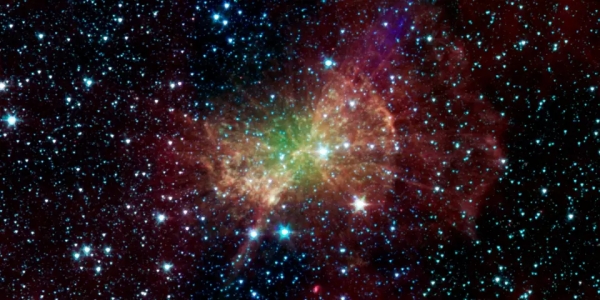
 Data Structure
Data Structure Networking
Networking RDBMS
RDBMS Operating System
Operating System Java
Java MS Excel
MS Excel iOS
iOS HTML
HTML CSS
CSS Android
Android Python
Python C Programming
C Programming C++
C++ C#
C# MongoDB
MongoDB MySQL
MySQL Javascript
Javascript PHP
PHP
- Selected Reading
- UPSC IAS Exams Notes
- Developer's Best Practices
- Questions and Answers
- Effective Resume Writing
- HR Interview Questions
- Computer Glossary
- Who is Who
What is a nebula and how is it formed?
A nebula is an interstellar cloud of dust made of hydrogen, helium and other ionized gasses. Initially, it was a name given for any diffuse cosmic object, including galaxies past the Milky Way.
Most nebulae are of the tremendous size, even a great many light years in diameter. The nebula that is scarcely noticeable to the human eye from Earth would seem bigger, yet not brighter, when near it. The Orion Nebula, the brightest cloud in the sky that involves an area double the diameter of the full Moon, can be seen with the exposed eye yet was missed by early astronomers.

Numerous nebulae are noticeable because of their fluorescence caused by the embedded hot stars, while others are so widespread they must be recognized with long exposures and extraordinary filters.
In these areas, the developments of gases, dust, and different materials "cluster" together to frame denser regions, which draw in more matter, and inevitably will wind up plainly sufficiently thick to shape stars. The remnants are then used to shape planets and other planetary objects.
The cosmic objects named nebulae are divided into 4 major groups.

Supernova remnant
A supernova remnant (SNR) is the structure because of the blast of a star in a supernova. The supernova leftover is limited by a growing shock wave and comprises of catapulted material extending from the blast.
There are two basic ways for the formation of a supernova:
A huge star may come up short on fuel, stopping to produce fusion energy in its center, and crumbling inward to shape a neutron star or a black hole
A white small star may accumulate material from a neighbour star until the point when it achieves a minimum mass and experiences a thermonuclear blast.
Dark nebula
A dark nebula is a sort of interstellar cloud that is dense to the point that it obstructs the light from objects behind it. The termination of the light is caused by interstellar dust grains situated in the coldest, densest parts of large sub-atomic clouds.
Clusters of dim nebulae are related with Giant Molecular Clouds. Isolated little dim nebulae are called Bok globules. Like other interstellar materials, only radio waves or infrared sensors can detect the things it obscures.

Planetary nebulae
A planetary cloud is a sort of discharging nebula comprising of a growing, bright shell of ionized gas emitted from old giant stars in their late stages. The formation of most planetary nebulae occurs due to during the last phase of the star's life, the external layers of the star are emitted by heavy stellar winds. After the vast majority of the red Goliath's climate is dispersed, the bright radiation of the hot brilliant center, called a planetary nebula nucleus (PNN), ionizes the external layers.
H II regions
An H II area or H II locale is an area of interstellar nuclear hydrogen that is ionized. It is a cloud of incompletely ionized gas in which star formation took place just recently, with a size running from one to many light years, and thickness from a couple to around a million particles for every cubic cm. The Orion Nebula, now known to be an H II district, was seen in 1610 by Nicolas-Claude Fabri de Peiresc by telescope.

